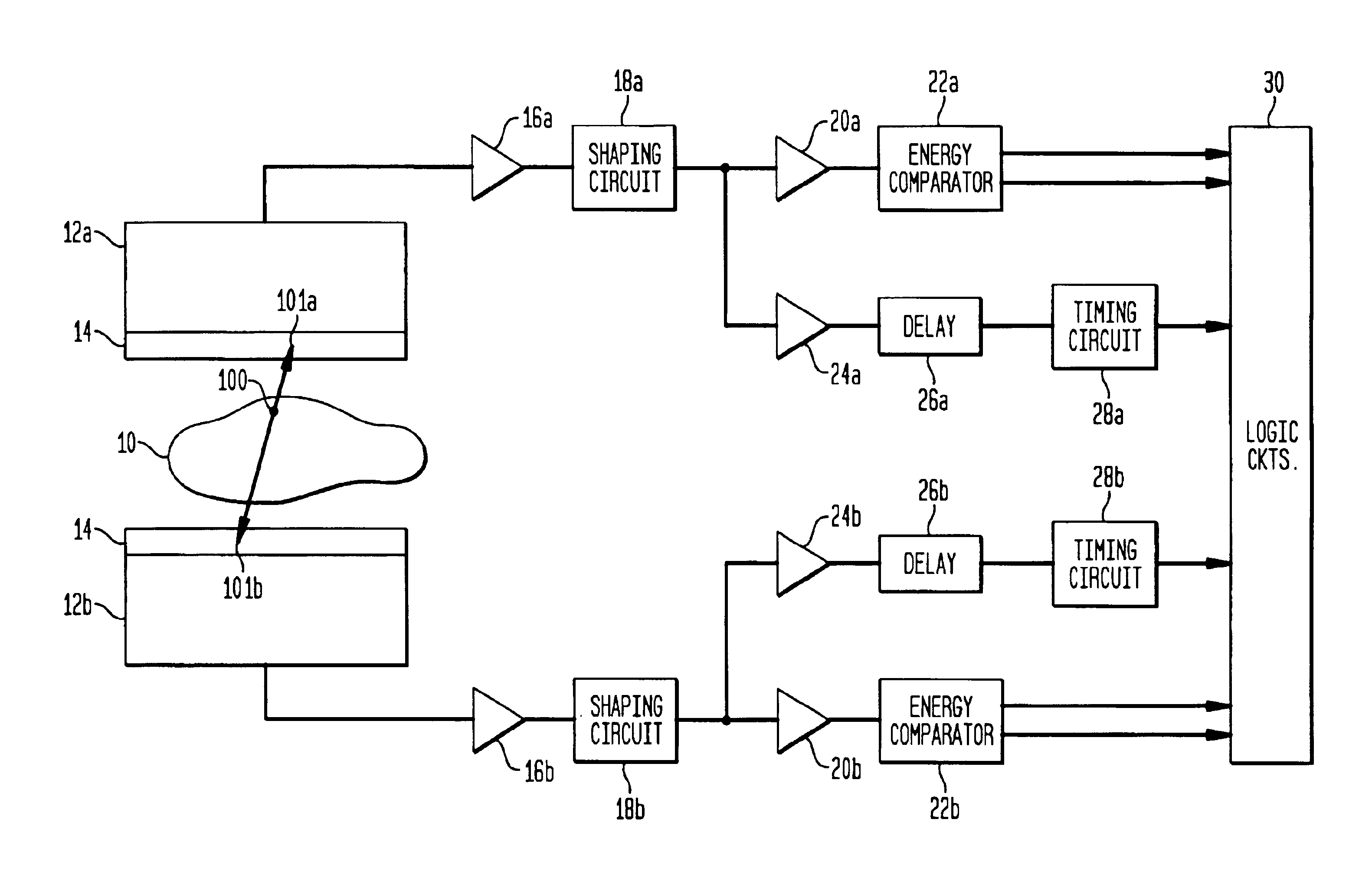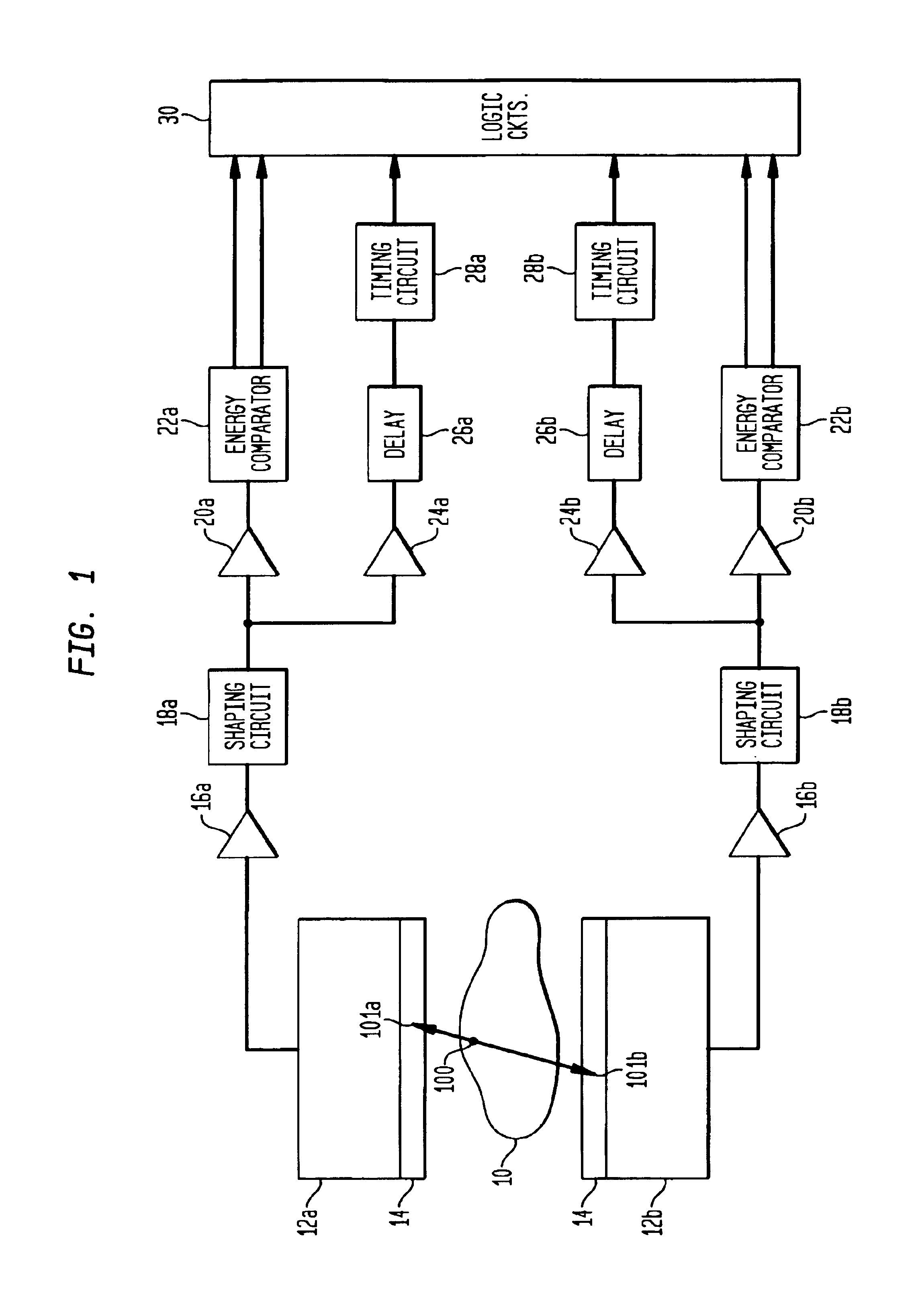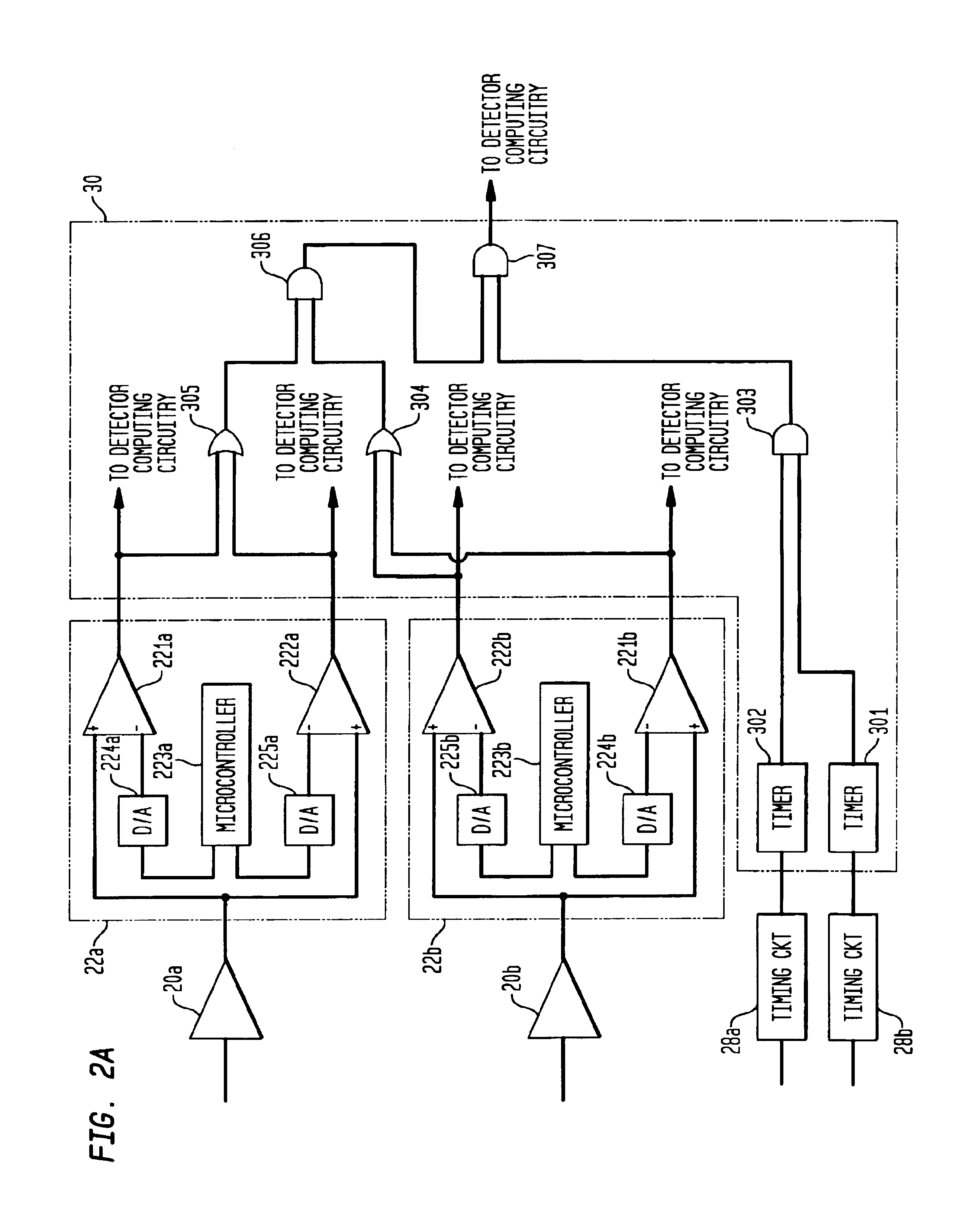Circuit and method for energy discrimination of coincident events in coincidence detecting gamma camera system
- Summary
- Abstract
- Description
- Claims
- Application Information
AI Technical Summary
Benefits of technology
Problems solved by technology
Method used
Image
Examples
first embodiment
FIG. 2A is a schematic diagram showing details of the energy comparator circuits 22a, 22b and logic circuits 30 according to the invention. Each energy comparator includes a dual comparator 221, 222. The inverting input of comparator 221 is provided with the photopeak energy level outputted by microcontroller 223 through a digital-to-analog (D / a) converter 224. The inverting input of comparator 222 is provided with the Compton scatter energy level produced by the microcontroller and applied to D / a converter 225. The output event signal is applied to the noninverting inputs of each comparator 221, 222. The outputs of comparators 221a and 222a are inputted to OR gate 305, and the outputs of comparators 221b and 222b are inputted to OR gate 304. The outputs of OR gates 304 and 305 are inputted to AND gate 306. The outputs of the comparators may be also sent to the detector computing circuitry for use in position calculation. As such, a signal will be outputted by AND gate 306 if the en...
second embodiment
the energy comparator circuits and logic circuits is shown in FIG. 2B. In this embodiment, a third OR gate 308 is supplied with the outputs from the photopeak level comparators 221a, 221b of each detector. The output of OR gate 308 is inputted to a three-input AND gate 306a, along with the outputs from OR gates 304 and 305. Thus, an output signal from AND gate 306a will be produced only if at least one of the events in each detector is a photopeak event. This embodiment prevents a positron event from being counted in the acquired image if both photons are Compton scatter photons. In such case, there exists a significant probability that the photons were scattered within the patient's body, and thus the computation of the point of origin of the positron event would be less reliable than desired.
Timing circuits 28a and 28b provide start signals to timers 301, 302 in response to receipt of event signals. In response to the start signals, each timer produces an output signal for a prede...
PUM
 Login to View More
Login to View More Abstract
Description
Claims
Application Information
 Login to View More
Login to View More - R&D
- Intellectual Property
- Life Sciences
- Materials
- Tech Scout
- Unparalleled Data Quality
- Higher Quality Content
- 60% Fewer Hallucinations
Browse by: Latest US Patents, China's latest patents, Technical Efficacy Thesaurus, Application Domain, Technology Topic, Popular Technical Reports.
© 2025 PatSnap. All rights reserved.Legal|Privacy policy|Modern Slavery Act Transparency Statement|Sitemap|About US| Contact US: help@patsnap.com



